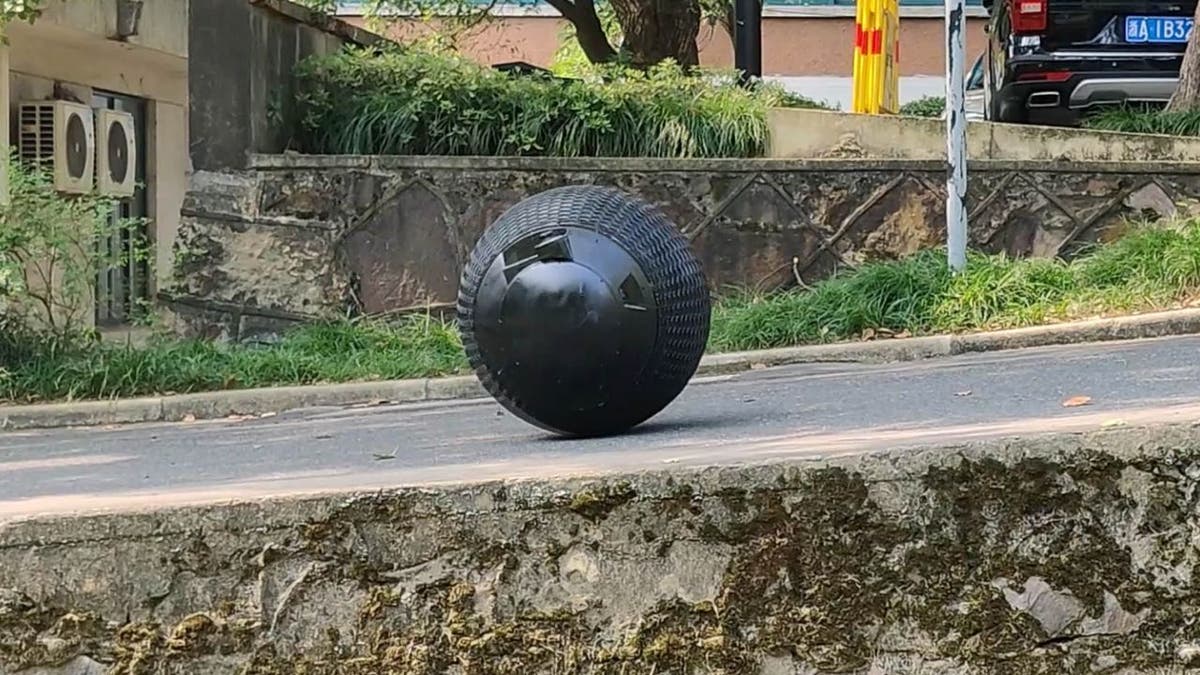In an age where technological advancements are rapidly transforming various sectors, China’s latest innovation in policing technology has rolled onto the scene, quite literally. Developed by Logon Technology, the Rotunbot RT-G is a spherical robot that is not only capturing attention but is also making waves in law enforcement by effectively chasing down criminals at impressive speeds. Weighing in at a hefty 276 pounds, this mechanical marvel pushes the boundaries of what’s conceivable in law enforcement robotics. Let’s explore the features and implications of this fascinating crime-fighting machine.
A Versatile Crime-Fighting Machine
The RT-G is anything but an average police assistant. Its unique design allows it to navigate both land and water, reaching astounding speeds of up to 22 mph. This amphibious capability enables it to traverse through muddy terrains, slush, and even plunge into rivers, emerging with ease on the other side. The RT-G boasts rapid acceleration, hitting about 19 mph in just 2.5 seconds, which gives it a significant edge in high-stakes pursuit scenarios.
What truly sets the RT-G apart is its resilience. Designed to handle drops from knee-high ledges and adept at rolling down staircases, this spherical robot proves to be a persistent force in the field, relentlessly pursuing suspects.

Advanced Technology at Its Core
At the heart of the Rotunbot RT-G lies an array of state-of-the-art sensors and technologies. Equipped with GPS for precise positioning, the RT-G also utilizes several cameras, ultrasonic sensors, obstacle avoidance technology, and threat-tracking systems. These advanced features allow the robot to navigate intricate environments while avoiding collisions with both objects and people.
The gyroscopic self-stabilization technology ensures its balance, so the robot maintains a wide contact patch, enabling smooth and quiet operation in various landscapes. This level of sophistication redefines the role of robotics in law enforcement.
A Non-Lethal Arsenal
The Rotunbot RT-G is outfitted with a versatile range of non-lethal tools aimed at managing various tactical scenarios. It includes tear gas dispensers, smoke bomb launchers, high-decibel horns, acoustic crowd dispersion devices, and net shooters designed for close-range suspect apprehension. This innovative arsenal empowers law enforcement to respond to situations ranging from crowd control to individual suspect engagements while avoiding lethal force.
Real-World Application
The capabilities of the Rotunbot RT-G are not confined to theoretical discussions; they are being actively put to the test. Currently, these robotic spheres are assisting police patrols in the commercial zones of Wenzhou, a city located in China’s Zhejiang province. This real-world application is providing valuable insights into the practicality and effectiveness of the RT-G in law enforcement. However, it’s important to note that while the robot showcases remarkable capabilities, it is not without limitations. Instances have been observed where the robot struggles with stability during sharp turns, and its pursuit capabilities can be compromised when encountering a staircase.
Key Takeaways and Considerations
The Rotunbot RT-G represents a significant leap forward in law enforcement technology. Its amphibious nature, high-speed capabilities, and non-lethal arsenal make it a versatile tool for police forces. Yet, the advent of such advanced technology raises important questions regarding privacy, surveillance, and the increasing automation of policing operations. As the RT-G rolls into the future of law enforcement, it is imperative to deliberate on the implications of deploying such advanced robotic systems in communities.
In conclusion, while the Rotunbot RT-G may symbolize a significant innovation in crime fighting, it underscores a broader conversation about technology’s evolving role in our lives. How do we balance these advancements with our rights and freedoms? As we explore these essential questions, public dialogue will be crucial in determining the trajectory of robotic technology in law enforcement.

